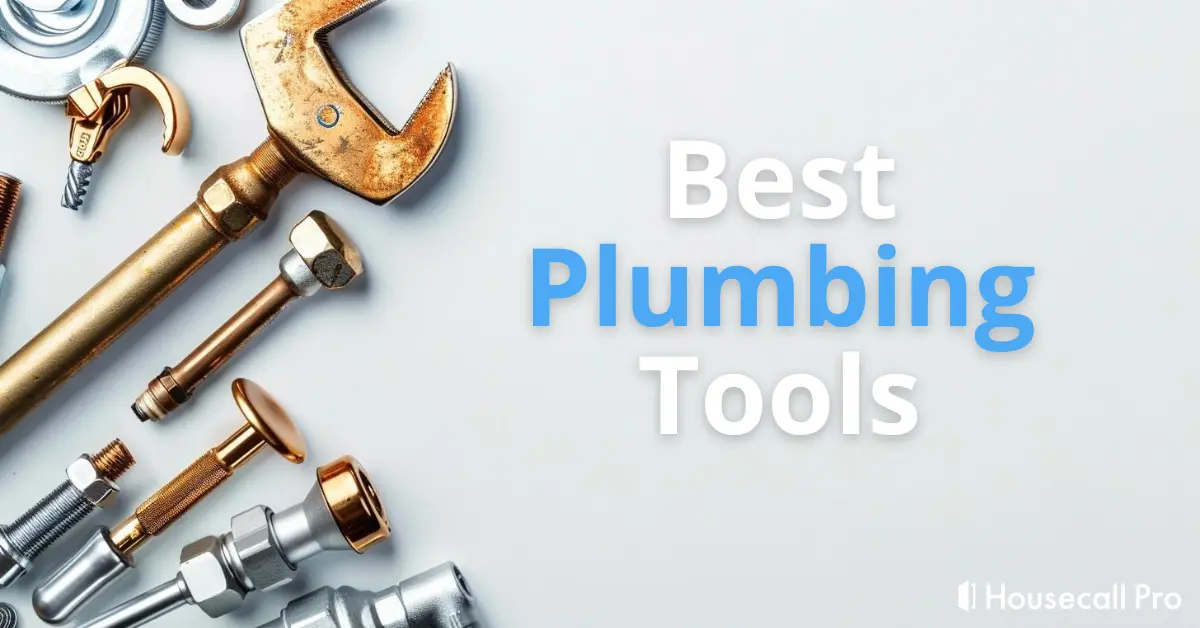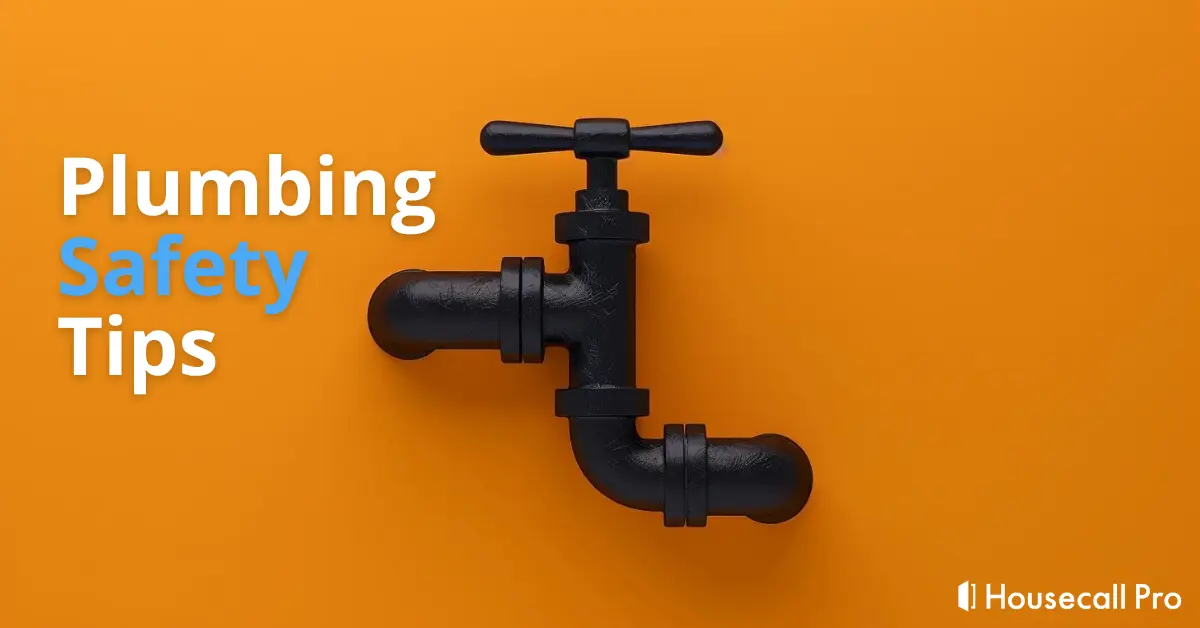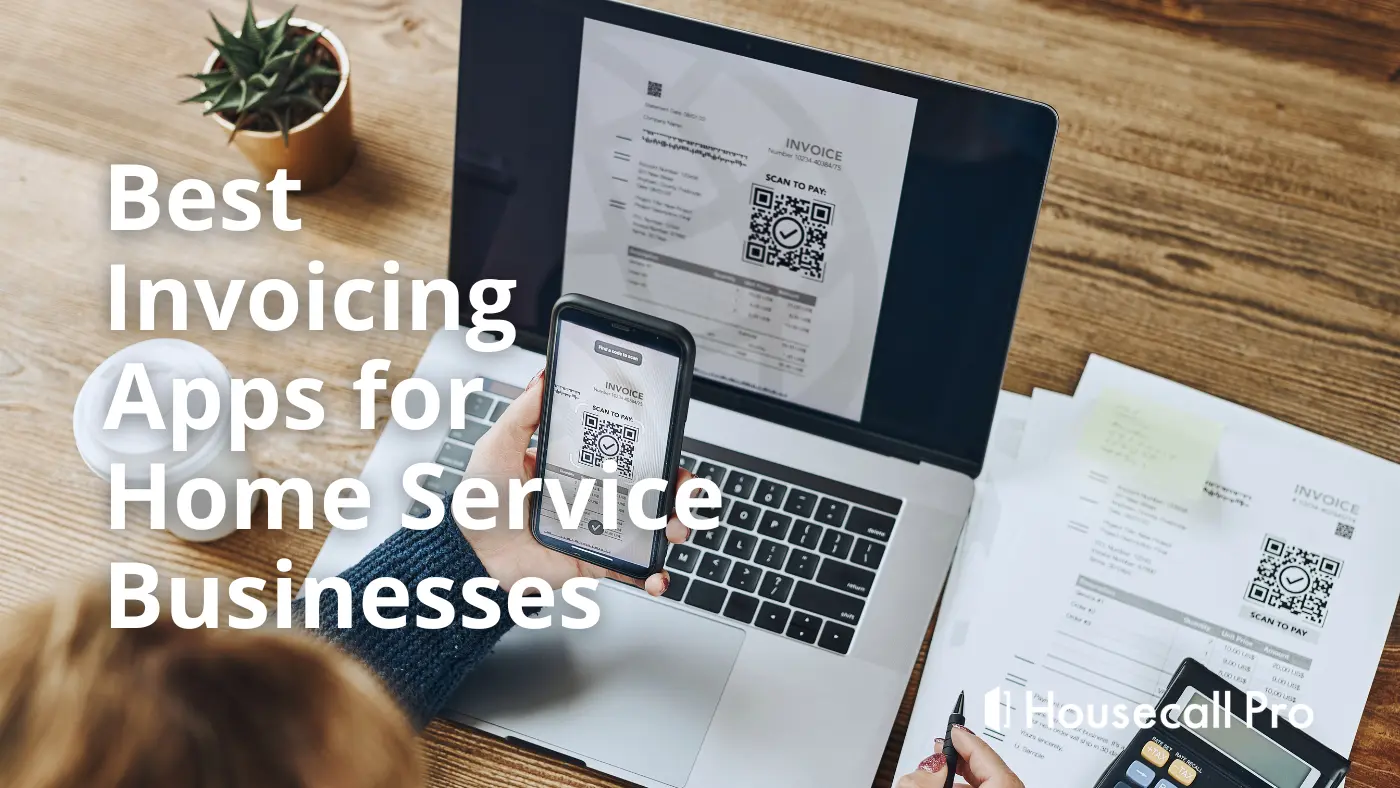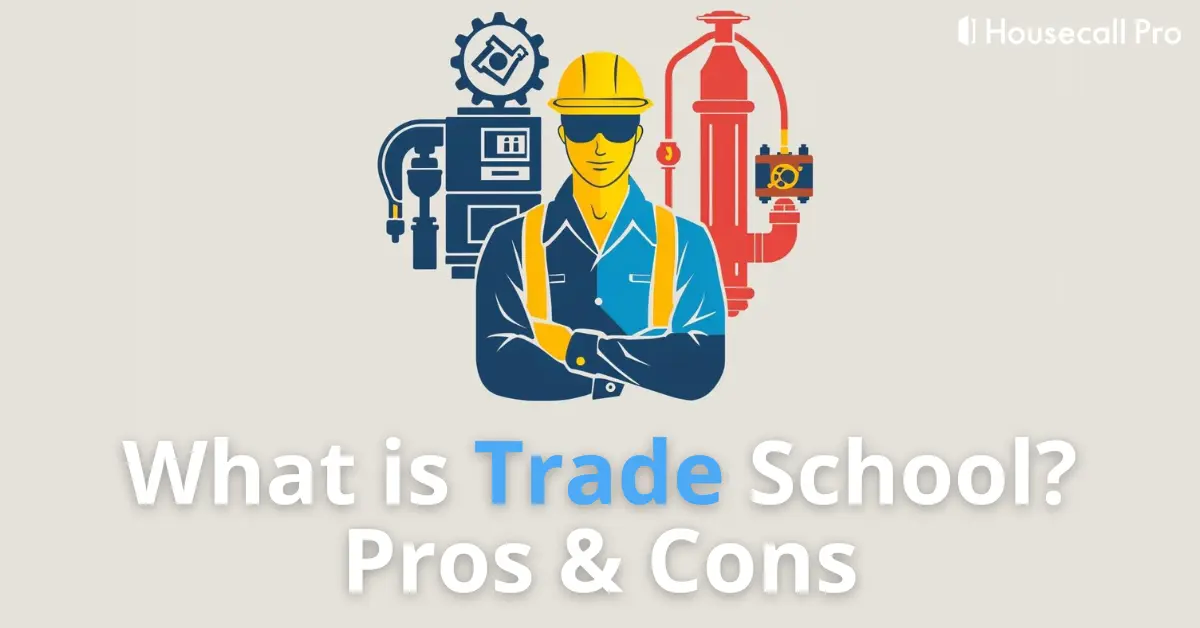
Building a profitable HVAC business isn’t just about providing top-notch service to your current customers (though that’s an excellent place to start). It’s also about finding new customers and revenue streams so your business can grow.
Realistically, there are two ways to increase sales:
- Getting more customers
- Selling more services to your existing customer
The secret to both is creating a strategic HVAC sales process. This guide will help HVAC business owners understand the value of an HVAC sales strategy and how to create an effective step-by-step HVAC sales process. We’ll also discuss HVAC sales tips and tactics for refining your strategy and sales pitch.
So, let’s get to it!
Does your HVAC business need a proper sales strategy?
If you want to expand your business and increase your revenue, yes! You’ll need a reliable, repeatable sales process and ways to train your field techs and office team to be good salespeople.
Even if you have a solid customer base or plan to stay small and just want to maintain the status quo, a solid HVAC sales strategy helps ensure you have enough work to stay in business. If you can keep your sales pipeline full of potential customers, you’ll always have enough leads to keep you busy for weeks, months, and years to come.
A well-planned sales strategy and sales process allow you to:
- Find and connect with your ideal customers
That is, the people who need your services most are willing to hire you right now or soon.
- Reduce how much you need to spend to get a new customer (AKA your customer acquisition cost)
This is partly because a solid sales process helps you focus on better leads who are more likely to become paying customers.
- Increase your revenue and profit margins
This can be done by reducing costs, expanding your customer base, and upselling more services to existing clients.
- Stay relevant in a highly-competitive field
Achieve this by building brand awareness and strong relationships with local homeowners.
Five tips to turn your HVAC technicians into sales professionals
Let’s be real; HVAC field techs are not usually trained salespeople. But when it comes to making sales—recurring services and upsells on jobs—you need your field techs to step up to make and close deals. Use these HVAC sales tips to help your techs be better sales professionals:
Boost your team’s confidence
Selling can feel scary, but it doesn’t have to be. Sell more jobs by utilizing business software like Housecall Pro, which equips techs with a mobile app in the field to guide them through the sales process. Armed with complete job and property details, customer histories, and a digital price book with product photos, descriptions, and pricing, your techs will quickly become selling pros.
Integrate data
Integrated property data gives your HVAC technicians a headstart before they even make it to the customer’s house by providing information on past completed work and key property data like property age and square footage.
Drag and drop estimates
At the job site, “good, better, best” sales proposal templates allow HVAC technicians to simply drag and drop prebuilt estimates into the three tiers so customers can choose the best option for their budget. Housecall Pro’s job costing tool and flat rate ready price book allow you to track the cost of labor, parts, equipment, and installation materials, ensuring accuracy and reducing errors.
Simple proposals
Presenting the proposal is made easier with Housecall Pro’s mobile app, which converts the proposal into good, better, and best options for customers. The technician can also email the proposal directly to the customer in the same format, maintaining the same professional experience no matter how the customer interacts with the proposal.
Customize rates
Sometimes pricing isn’t a one-size-fits-all situation. Customization is key. Techs can add special pricing rules for commercial clients with pre-negotiated rates—like for membership plans. HVAC businesses can benefit from using specialized HVAC flat rate software to streamline this customization process.
Looking for even more advice on how to train your field team to be sales professionals? Check out our ebook with expert advice included.
How to create a sales process for your HVAC business
There are five typical steps in every HVAC sales process, and each one brings you closer to turning a lead or prospect into a paying customer. Your sales process might involve all or some of these steps, but it can also include additional steps to account for how your team works. This helps pinpoint what sales activities are working best, so you can develop a reliable plan to find new leads and win over new customers consistently.
Step 1: Create a prospecting customer list
When you’re selling anything, the first thing to do is figure out who you’re selling to.
Develop an HVAC sales lead list
Sales prospecting, also known as lead generation, involves finding and contacting new potential customers. You should start by making a list of people you want to reach out to, along with how you will contact them (email address, phone number, etc.). Congratulations! This is your list of sales leads.
Leads can come from all kinds of sources. For example, customer referrals, networking at trade shows, your contact form on your website, your social media followers, and even former customers you haven’t heard from in a while.
Your list should include as much information about each lead or prospect as possible, including first name, last name, email, phone number, and where you found them.
Step 2: Reach out to your prospecting list
Now that you’ve compiled your list of leads, it’s time to contact them. You can use different channels to contact them, including:
Whether you’re calling, messaging, or meeting in person, plan out what you’re going to say in advance. You don’t need a formal script, but you should have loose talking points and a goal for the conversation.
Focus on getting to know the customer and the customer’s needs rather than diving straight into a sales pitch. Be friendly, cordial, and personable to make an excellent first impression.
Step 3: Qualify your potential customers
You might assume that any lead willing to give you the time of day is a potential customer worth pursuing. But, that’s not always the case.
Focusing your energy on a few high-quality sales leads is often better than trying to sell to everyone who crosses your path—especially because many of them aren’t yet ready to hire you or don’t have the budget for your services.
Step 4: Demonstrate value in your sales pitch
This step is where a solid sales pitch comes in handy. Try to highlight your unique selling point. What does your team bring to the table that your competitors don’t?
If a homeowner expresses interest in your services but still seems hesitant, you can use different sales tactics to move the conversation forward.
One option would be to schedule a free home evaluation, where a team member visits the prospect at home, checks out their current HVAC system, and chats with the homeowner about how your team can address their needs and concerns.
This conversation lets you demonstrate value and create a personalized offering that speaks to the homeowner’s needs, budget, and timeline.
Step 5: Close the deal
Here are some tips to help you win over a new customer:
Do motivate them with a limited-time offer
For example, you could offer a special discount for first-time customers who book this week only.
Do use social proof to inspire confidence in your team’s abilities and expertise
For instance, you can place testimonials from past customers online to show that your services provide long-term value to homeowners.
Don’t pressure customers to agree to something they’re not interested in
Your service offering should be tailored to their specific needs, so they’ll be happy to say yes and pleased with the results.
Upselling vs. Cross-selling
When a customer calls to hire you for one service, do you ever think about how you could provide more value by selling them a recurring membership, package, or bundle? If so, then you have some firsthand experience with cross-selling.
Upselling is just convincing a customer to upsize or upgrade their purchase. You sell them a more expensive, higher-end version of the service or product they’re already interested in.
Cross-selling is selling a customer additional items related to their original purchase. You see this online whenever a website recommends related items or shows you suggestions based on things people frequently buy together.
Cross-selling, Upselling, or Both?
The short answer is both. If you time it right, both can effectively boost your business’s bottom line. But to know when the right approach is right, you’ll want to ensure your techs listen to solve the customers’ problems. Not sure what the difference is between cross-selling and upselling? Let’s go over their differences in detail:
Upselling
Upselling involves persuading a customer to purchase a higher-end or upgraded version of the product they are considering or have already chosen. The focus is on increasing the value of the sale by encouraging the customer to spend more on a better product.
An example of upselling in the HVAC business is when a customer wants to purchase a basic HVAC unit, and the salesperson suggests upgrading to a higher-end model with more advanced features and energy efficiency. The salesperson may highlight the benefits of the upgraded model, such as better temperature control, improved air quality, and potential energy savings. By upselling to a higher-priced HVAC unit, the business can increase its revenue while providing the customer with a more advanced and efficient system
Cross-selling
Cross-selling involves suggesting additional products related or complementary to the item the customer is purchasing. The goal is to increase the total number of items sold and provide additional value to the customer.
For instance, if a customer is buying a new air conditioning unit, the salesperson can recommend purchasing a maintenance plan or air filter replacement service. Another example is offering a duct cleaning service to a customer who is already purchasing a furnace installation service. By cross-selling additional services, HVAC businesses can increase their revenue and provide more value to their customers.
At the end of the day, deciding whether to cross-sell or upsell a particular customer depends on the situation.
16 HVAC sales tips you can try at your business
1. Communicate value quickly and clearly
Practice your sales pitch and coach your team members on how to communicate value in terms the customer understands and cares about.
So, instead of discussing physical results, like a working furnace or better airflow, talk about the value added to your customers’ lives—like keeping their home comfortable and safe all year round.
2. Use a high-quality lead magnet
There are plenty of leads to profit from within the HVAC industry; revenue is set to grow by 9.7% between 2019 and 2025, according to the Air Conditioning Contractors of America. And on top of that, revenue has been growing steadily at a 1% annualized rate since 2008.2 What’s that mean? There’s plenty of money to be made in this field.
You don’t want to waste money on advertising to people who aren’t going to hire you. Focus on homeowners located within your service area who can afford your rates, because they’re the ones who have a potential need for your services (whether that’s right now or in the near future).
3. Use the right channels for your HVAC business
When it comes to getting the word out about your HVAC business, you should use a combination of different channels to reach as many homeowners as possible. This can include social media channels like Facebook, Twitter, Tik Tok, and Instagram, as well as email marketing, cold calling, and direct mail. Also, take advantage of customer referrals by asking satisfied clients to refer your business to family and friends.
Here’s what an HVAC lead magnet might look like:
- A downloadable checklist for annual HVAC maintenance
- An ebook with information on the top 10 energy-efficient heating and air conditioning units
- An infographic that shows how to troubleshoot common HVAC issues
All of the above lead magnet examples ensure that the user either has an HVAC unit or is considering an HVAC unit—perfect for a potential client.
4. Get serious about following up
Once you’ve got your lead magnet pulling in a steady stream of leads, it’s vital to respond to leads promptly. While it may seem like an HVAC sales no-brainer, the difference between a day-of and a next-day response could mean the difference between a new client and a missed opportunity.
When are the best times to follow-up?
- 2-3 days after a sales call to see if they’ve had a chance to think about your offer
- 2-3 days after you send an outreach email but haven’t heard back
- Within a week of completing an HVAC job to see if they’re happy with the results and if they have any questions
- Whenever customers or leads are due for routine maintenance
If you can’t respond right away, use a confirmation email or voicemail message that lets the inquirer know you’ll be in touch within 24 hours. Another pro tip is to direct callers to your online booking system within your voicemail message. That way, even if you can’t come to the phone, you can still convert your HVAC lead to a customer.
Need even more ideas? Check out these four ways to use automated marketing for your follow ups.
5. Look for ways to add value
Instead of pressuring customers into purchases they don’t need or want, think of this as an opportunity to tell customers about any benefits or services they may not know about.
6. Cater to customer needs
Let’s say a customer hires you for HVAC unit repairs. You could upsell them by offering energy-saving services to install for their long-term benefit.
Or, you could cross-sell them on relevant add-ons, like a package that includes weather-stripping, caulking, and insulation replacement to prevent heat from escaping.
7. Create easy-to-sell bundles
Here you could position an upgrade from a basic product or service to a premium. You might market this as a “deluxe offering” as the higher-value option. This makes it easier for your employees to cross-sell, because the bundles are already defined based on combinations that work well for your business and clients.
8. Provide multiple options (but not too many)
Offering a few options that are easy to compare can prevent customers from getting overwhelmed or experiencing “decision paralysis.” You can also help the customer’s decision by offering an opinion on which option you would choose in their situation.
9. Be upfront about extra costs
Yes, you want to focus on how your offering adds value to the customer, but not to the extent that you bury news about the pricing. Being upfront about the extra time or materials required for a larger job shows the customer that you’re trustworthy and helps build rapport.
10. Give something away for free
Sometimes to bring in more money, you have to throw customers a freebie or two. It can be something as simple as offering free maintenance for six months if they upgrade or a discount if they buy your HVAC service preventative maintenance plan or warranty.
11. Make upselling and cross-selling a habit
Give your HVAC service technicians the proper sales training and maybe even a sales manual to make upselling a regular habit. Scenarios, role-play practices, and body language training are all helpful.
12. Don’t upsell to the wrong customers
If a customer is hard to communicate with or has a history of canceling appointments at the last minute, you might want to think twice about trying to upsell them. Train your team to spot these less-than-ideal customers so you don’t end up doing extra work for someone who eats into your profits.
13. Reward customers who spend more
It’s nice to find little ways to show appreciation for customers who commit to larger purchases. It can be something as simple as a thank you note, a discount code for their next appointment, or a gift card to a local restaurant.
14. Use the right tools for the job
And we’re not talking about just the tools your field techs need. Whether a customer already knows exactly what they want or would prefer to see different options, you can use sales automation tools to meet their needs. For instance, Housecall’s Sales Proposal Tool makes it easier to show customers all of the options you have to offer – including packaged deals and add-on services that can help you create premium proposals and close bigger jobs.
15. Keep it simple
This HVAC sales tip goes back to the age-old rule: keeping it simple. Make it as easy as possible for potential customers to use your services. That means putting the least number of steps between the potential customer and yourself so that booking your service is a breeze.
- First, post your contact information prominently and clearly on your website and in your advertisements
Be sure to build a presence on common directories like Yelp, Angie’s List, and Yellow Pages. Include all pertinent information, including your hours of operation, the services you provide, and other details.
Pro Tip: View our Angie’s List Competitors guide for even more directories to join.
- Next, simplify your booking and payment services so potential customers can easily lock down and pay for an appointment with you
Old-school processes like paper invoicing are painfully slow and easily misplaced, resulting in a potentially poor client experience.
Simplify booking and payments
An easy way to do this is with HVAC software. Moving your business processes to an HVAC software not only streamlines your scheduling, paperwork, field service invoicing, and marketing strategies, but it also makes using your services simpler for your clients. With Housecall Pro, your clients can also book your services digitally. You can even set up an integration with Yelp so that your clients can book right through the app.
Invoice digitally
When it’s time to pay, Housecall Pro lets you invoice your clients digitally and allows them to pay for your services online. When a customer pays for your invoice, Housecall Pro’s Instapay feature allows you to deposit credit card payments into your bank account instantly so that you’ll have the money in 30 minutes or less.
Real-time dispatching updates
As an added bonus, Housecall Pro’s dispatch updates allow you to keep your clients updated as soon as a technician is dispatched to service them, minimizing the dreaded, lengthy service window and winning you a happy customer.
16. Offer financing
Make upselling easier by letting your customer split up the full cost of a job into smaller monthly payments. If they wanted a more powerful AC but couldn’t pay for everything upfront, suddenly, it becomes affordable when they can pay over time.
Even if your customer can pay all at once, it can’t hurt to simply give them the option of consumer financing. You never know what they might decide!
Give a few of these HVAC sales tips a shot and get ready to feel the impact across your business. And don’t forget the biggest tip of all—letting Housecall Pro have your back when it comes to boosting profits, creating customer loyalty, and making the sale. Sign up for our 14-day free trial and see the Housecall Pro difference.





